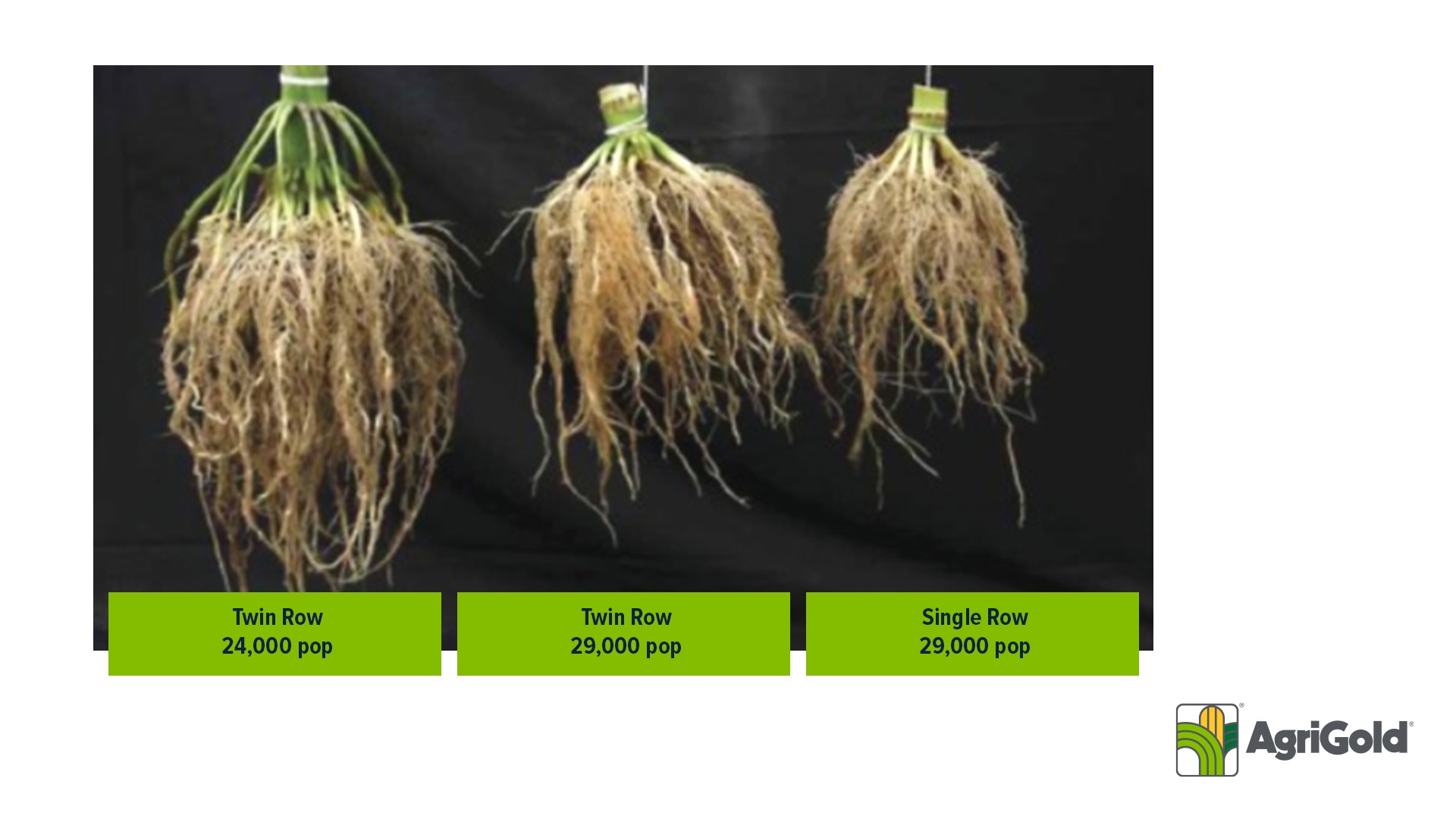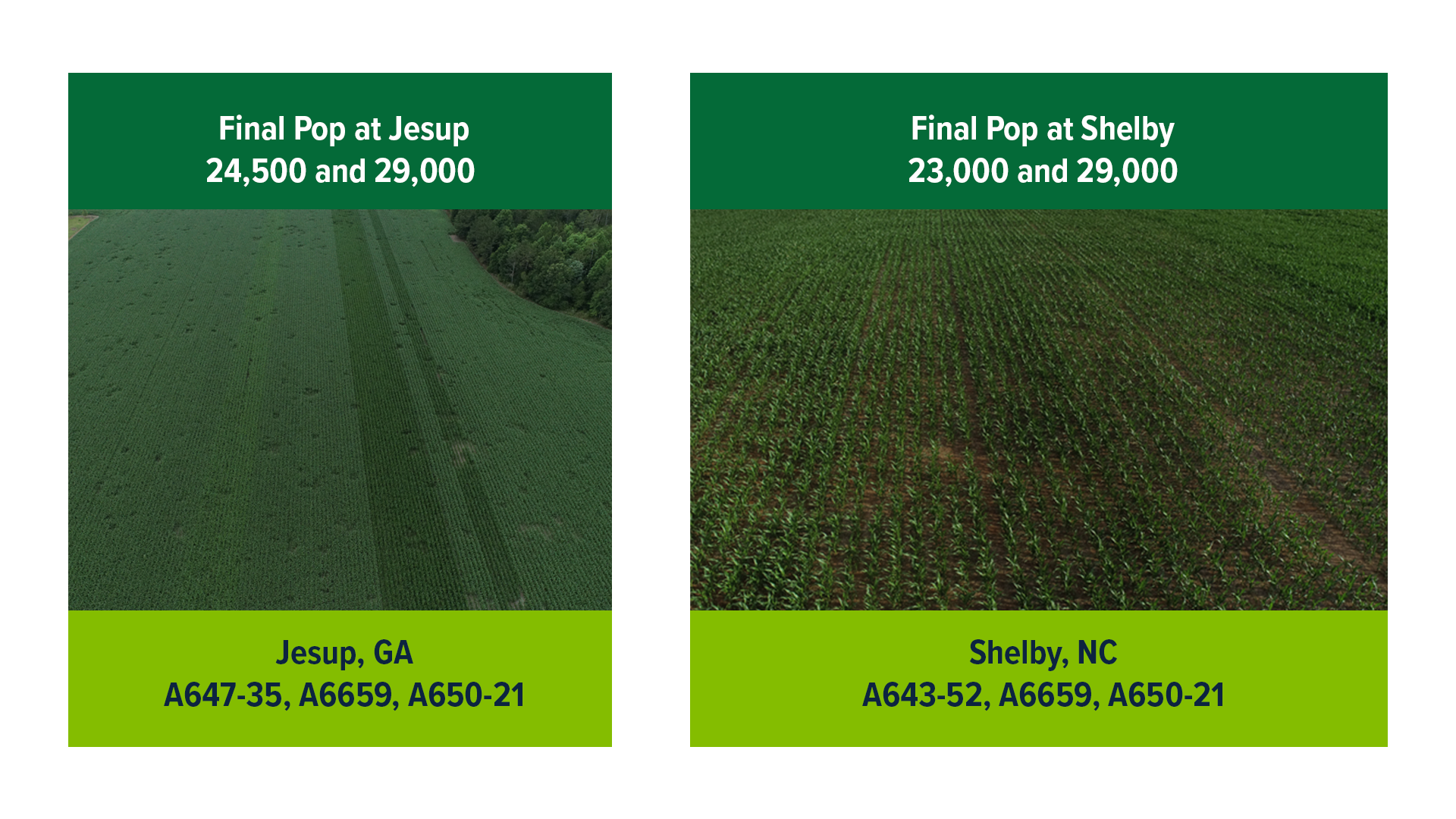- The Southeast’s intermittent drought challenges, caused by the soil’s poor moisture retention, necessitate precise management and irrigation strategies.
- Increasing root mass through innovative practices has been identified as a key factor in enhancing corn yield in the region’s dryland conditions.
- Twin row planting, deeper planting depths, and strategic fungicide applications have achieved promising results, indicating potential solutions to improve corn yields.
Leslie Lloyd, AgriGold agronomist, is originally from the Southeast but spent 10 years living in Iowa before moving back to the warmer climate. After living in both regions, he got curious about the Southeast’s dryland conditions — and why corn yields lagged behind those in the Midwest.
CHALLENGES OF DRYLAND

An evaluation of rainfall during the growing season in five different locations (two in Iowa and three in the Southeast) showed similar amounts of precipitation by month. Intermittent drought in the Southeast presents challenges throughout the season and can impact critical growing stages.
Because of the soil’s inability to hold moisture in the dryland regions, farm management decisions become even more critical. Of course, irrigation is key in regions subject to intermittent drought. But dryland growers must take extra caution to optimize conditions for the plant throughout the growing season.
Factors that are always important, like planting population and depth, can become dealbreakers in areas where water retention is a challenge for crops.
Because water retention in the soil is so low, if intermittent drought occurs during key times like pollination, a crop planted too densely could be susceptible to total loss.
Lloyd considered the combination of these factors (limited water consistency and low population environments) and found another factor that contributed to higher yields in dry land conditions – root mass.
Could more root mass be the missing piece of better yields in the Southeast?
INNOVATIVE SOLUTIONS
For the past two years, Lloyd has studied ways to improve root mass in his region. Larger roots can improve access to water and nutrients, giving the crop a better chance to get through critical times throughout the season.
In the past two seasons, the team has seen promising results from twin row planting, increased planting depth and strategic fungicide application.
TWIN ROW PLANTING
Planting corn in twin rows on 30-inch centers has the potential to increase yield by allowing better light interception. In Lloyd’s trials, twin row planting also led to higher root mass.

INCREASED PLANTING DEPTH
Each trial with more depth demonstrated better yields. To continue this research, the increased depth will be used across the trials as a control, with limited strips planted at the previous, shallower depth.
FUNGICIDE APPLICATION
Strategic fungicide applications also showed higher yields. Side by Side comparisons and some university work suggests strobilurin fungicides applied at V5 can alleviate some moisture stress typical of the Southeast region.
At-plant fungicide Xyway also showed cleaner leaves in early season and improved crop health pre-tassel where applied. Xyway’s unique at-plant application could allow greater access on small farms where aerial application isn’t an option.
INCREASING CONSISTENCY
With these modifications leading to larger root mass and less stressed crops, Lloyd is now on a mission to help his growers see these results consistently.
Moving into the 2024 planting season, Lloyd will continue working with his growers to experiment with variables that yielded positive results throughout the 2022 and 2023 growing seasons.

Reach out to your local AgriGold agronomist if you have questions about maximizing production on your dryland acres.



